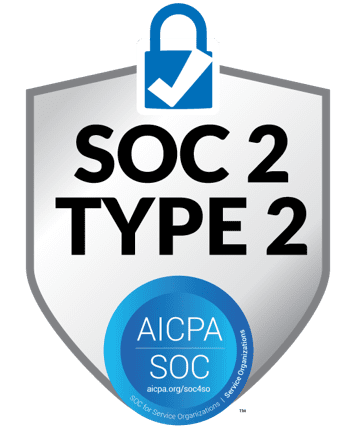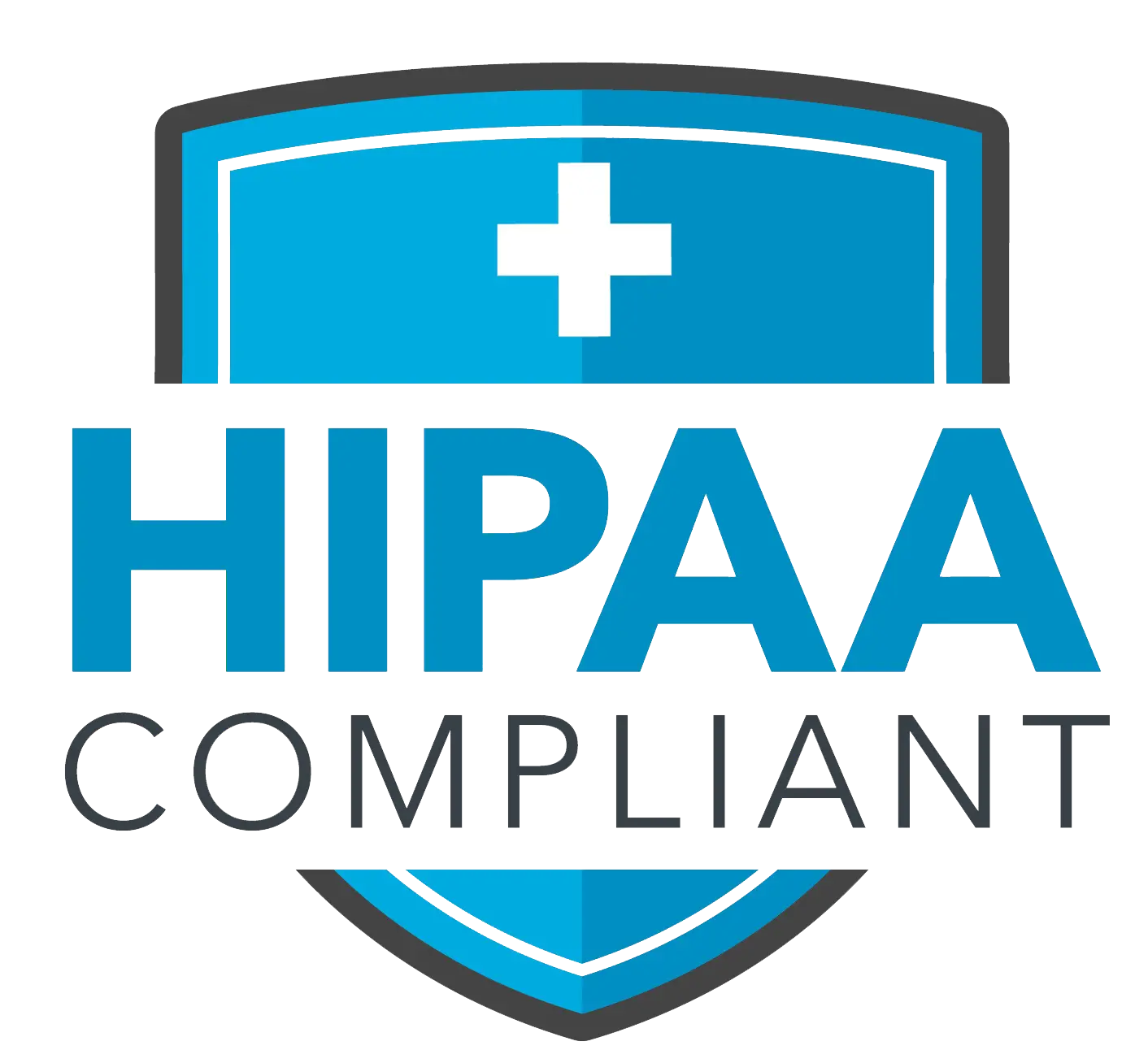Companies across industries are unknowingly hemorrhaging their most sensitive data through employees using free AI tools like ChatGPT, Claude, and Gemini. While these powerful platforms promise increased productivity and efficiency, they’re creating a massive security blind spot that puts corporate secrets, customer information, and proprietary data at serious risk.

Recent research reveals that nearly 10% of employee prompts to AI tools contain sensitive company data, with customer billing information and employee personal details making up the majority of leaked information. This alarming trend stems from workers seeking quick solutions to complex tasks, often copying and pasting confidential documents directly into public AI platforms without understanding the long-term consequences.
The problem extends far beyond individual mistakes. Shadow AI adoption has exploded as employees bypass corporate IT policies to access unauthorized tools.
Understanding these risks and implementing proper safeguards has become critical for protecting your business from potentially devastating data breaches and compliance violations.
Unveiling the Hidden Corporate Data Scandal in Free AI Tools

Free AI tools are quietly collecting vast amounts of corporate data through employee usage, with 84% of AI tools experiencing data breaches. Your company’s sensitive information flows through these platforms daily, often without any oversight or security controls.
How Free AI Tools Collect and Process Corporate Data
Free AI tools gather your corporate data through multiple channels during regular business operations. When your employees paste text into chatbots or upload documents for analysis, this information becomes part of the platform’s data ecosystem.
Your team members often use personal accounts for work tasks. Research shows that 45.4% of sensitive data prompts are submitted using personal accounts, completely bypassing your company’s monitoring systems.
Common data collection methods include:
- Direct text input from emails and documents
- File uploads containing proprietary information
- Chat conversations with sensitive business details
- Screen sharing and document analysis features
These platforms process your data to improve their AI models. Your confidential information may be stored on their servers or used to train future versions of their tools.
The data often crosses international borders and gets processed by third-party services. Your corporate secrets become part of training datasets that other users might inadvertently access through AI responses.
Scope and Scale of the Hidden Data Scandal
The scale of corporate data exposure through AI tools is massive and growing rapidly. 75% of workers use AI in the workplace, yet only 14% of companies have official AI policies in place.
Your employees are using multiple AI platforms simultaneously. Studies reveal that 58% of AI users regularly rely on two or more different models, multiplying your data exposure risks.
Key statistics reveal the problem’s magnitude:
| Risk Factor | Percentage |
|---|---|
| AI tools with data breaches | 84% |
| Workers hiding AI usage | 33% |
| Tools with stolen credentials | 51% |
| Platforms with SSL issues | 93% |
Generation gaps make the problem worse. 93% of Gen Z employees use two or more AI tools at work, while 79% of millennials follow similar patterns.
Your sensitive data spreads across multiple unsecured platforms daily. Each tool creates a potential exit point for confidential information that exists outside your IT governance structure.
Recent High-Profile Data Breaches Linked to AI Tools
Recent data breaches have exposed the vulnerability of AI platforms handling corporate information. 36% of analyzed AI tools experienced a breach in just the past 30 days, showing the immediate nature of these threats.
Productivity tools show the highest risk levels. These platforms had an average of 1,332 stolen corporate credentials per company, with 92% experiencing data breaches.
Major vulnerability patterns include:
- Password reuse affecting 44% of AI tool companies
- Infrastructure weaknesses in 91% of platforms
- SSL configuration problems across 93% of tools
Your company credentials are prime targets for attackers. Corporate credentials are often the first targets when AI platforms get compromised.
The breaches often go undetected for extended periods. Your sensitive data may be exposed without your knowledge, especially when employees use personal accounts that bypass your security monitoring systems.
Each compromised AI tool becomes an entry point for threat actors. Once inside, attackers can move through your systems to access customer information or deploy ransomware attacks.
Shadow AI: The Threat Lurking in Unapproved AI Adoption
Your employees are using AI tools without your knowledge, creating invisible data risks that could expose sensitive company information to unauthorized platforms. Studies show that organizations are unaware of 89% of enterprise AI usage, despite having security policies in place.
What Is Shadow AI and Why It’s Growing
Shadow AI occurs when your employees use artificial intelligence tools without getting approval from your IT department or following company data governance policies. Unlike general shadow IT, shadow AI introduces unique data privacy and model training risks that can permanently compromise your confidential information.
The problem is exploding across workplaces. Research indicates that 50% of workers use unapproved AI tools for work-related tasks.
Your employees turn to these tools because official IT approval processes feel too slow or restrictive. They want immediate productivity gains without waiting for bureaucratic approvals.
Key factors driving shadow AI adoption:
- Free access to powerful AI chatbots
- Easy-to-use interfaces requiring no training
- Remote accessibility through cloud platforms
- Desire to stay competitive and efficient
- Frustration with lengthy IT approval processes
The convenience factor cannot be overstated. Most AI tools operate as simple web applications that your employees can access instantly from any device.
Unauthorized Use Cases in Modern Organizations
Your employees are using unapproved AI tools for tasks that directly involve sensitive company data. Over one-third of employees admit to sharing sensitive data with AI apps without employer consent.
Common shadow AI activities include:
- Document analysis: Uploading contracts, financial reports, or strategic plans
- Code development: 92% of developers use AI-powered coding tools both inside and outside their workplaces
- Customer communication: Drafting emails containing client information
- Market research: Inputting competitive intelligence data
- Human resources: Processing employee records or candidate information
Your marketing team might use AI to analyze customer data. Your legal department could upload confidential contracts for review.
Your finance team might input budget information for analysis. Each of these activities creates potential data exposure points.
When employees paste sensitive information into public AI platforms, that data can be stored, analyzed, or even used to train future AI models.
Popular Free AI Tools Impacting Corporate Data
ChatGPT remains the most widely used unauthorized AI tool in corporate environments. Your employees access it directly through web browsers, making it nearly impossible to monitor without specialized security software.
DeepSeek has emerged as another concerning platform. Its free access and advanced capabilities attract employees who want alternatives to mainstream AI tools, but it operates outside your security perimeter.
High-risk free AI categories affecting your organization:
| Tool Type | Risk Level | Common Business Use |
|---|---|---|
| Chat-based AI | Very High | Document review, email drafting |
| Code assistants | High | Software development, debugging |
| Image generators | Medium | Marketing materials, presentations |
| Translation tools | High | International communications |
Your biggest challenge lies in detection. These tools operate through standard web browsers, making them indistinguishable from regular internet usage.
Employees can copy sensitive data from your internal systems and paste it into these platforms within seconds. The data retention policies of these free tools often remain unclear.
Your confidential information might be stored indefinitely on servers in unknown locations, potentially accessible to the AI companies or government authorities.
Shadow AI creates security blind spots that prevent your IT team from tracking what data is being transmitted and who has access to it.
This lack of visibility makes it impossible to assess the full scope of your data exposure.
Risks to Data Privacy and Security
Free AI tools create multiple pathways for sensitive business information to leak outside company control. These vulnerabilities can trigger regulatory violations and cause lasting damage to corporate reputation when data breaches occur.
Exposure of Sensitive User and Business Data
When your employees use free AI tools, they often input confidential information without realizing the risks. Research shows that 84% of AI tools have experienced data breaches, creating massive exposure points for your company data.
Personal accounts bypass security controls completely. Studies reveal that 45.4% of sensitive data prompts are submitted using personal accounts. This means nearly half of your sensitive information flows through systems you cannot monitor or control.
Your data becomes vulnerable in multiple ways:
- Training data retention – Many free AI services store your inputs to improve their models
- Third-party sharing – Some platforms share data with partners or advertisers
- Cloud storage risks – Your information may be stored on unsecured servers
- Employee account access – Personal accounts lack enterprise security features
The problem grows worse because one-third of AI users keep their usage hidden from management. This shadow IT creates blind spots where sensitive data leaks can happen without your knowledge.
Vulnerabilities Leading to Compliance Risks
Your company faces serious regulatory penalties when free AI tools violate data protection laws. Many free platforms lack the security controls required by GDPR, HIPAA, and other regulations.
Technical vulnerabilities are widespread. Analysis shows that 93% of AI platforms have SSL/TLS configuration issues, which weakens data encryption during transmission.
Key compliance risks include:
| Risk Area | Impact |
|---|---|
| Data residency | Your data may be stored in prohibited locations |
| Consent management | Users cannot control how their data is processed |
| Access controls | No way to restrict who sees sensitive information |
| Audit trails | Limited visibility into data usage and sharing |
AI privacy incidents have surged 56%, creating more opportunities for regulatory violations. Regulators are paying closer attention to AI data practices.
The financial impact can be severe. GDPR fines reach up to 4% of annual revenue.
Healthcare violations under HIPAA can cost millions per incident.
Potential Reputational Damage for Enterprises
Data breaches involving free AI tools can destroy customer trust and damage your brand permanently. When sensitive customer information leaks through unsecured AI platforms, the public blame falls on your company, not the AI provider.
Customer data exposure creates lasting harm. Your clients expect you to protect their information regardless of which tools you use.
A single breach can trigger customer departures and negative media coverage. Recent high-profile incidents show the scope of potential damage:
- Loss of competitive advantages when proprietary data leaks
- Customer lawsuits over privacy violations
- Partner relationship damage from shared information exposure
- Stock price declines following breach announcements
Your reputation suffers even when the breach occurs at the AI provider level. Customers see your company as responsible for choosing unsafe tools.
The hidden risks of free AI tools often become public relations disasters.
Recovery from reputational damage takes years and significant investment. Many companies never fully regain customer confidence after major data incidents involving AI tools.
AI Governance and Regulatory Oversight
Most companies lack basic oversight of AI systems used across their organizations, creating massive data protection gaps. Current regulatory frameworks struggle to keep pace with rapid AI adoption, while access controls remain inadequate at most businesses.
Gaps in Current AI Governance Frameworks
Your company likely faces significant blind spots in AI oversight that traditional governance can’t address. IBM’s 2025 data breach report reveals that 63% of breached organizations had no governance policies for managing AI or detecting unauthorized use.
Shadow AI creates the biggest governance challenge. One in five organizations experienced breaches from unauthorized AI tools that employees use without approval.
These shadow AI incidents add $670,000 to average breach costs. They take a full week longer to detect and contain than regular security incidents.
Key governance gaps include:
- No inventory of AI tools in use
- Missing approval processes for AI deployment
- Lack of regular audits for unauthorized AI
- No policies for employee AI usage
Traditional IT governance assumes you can inventory and control technical assets. AI adoption often outpaces this organizational awareness.
Role of Regulators in Enforcing Data Protection
Regulators increasingly expect systematic AI oversight from your organization. The 2025 International Scientific Report on AI safety called for harmonized rules around accountability and human oversight in critical applications.
US breach costs reached $10.22 million in 2025 due to steeper regulatory fines. Other countries saw decreases, creating compliance challenges for international operations.
Regulatory authorities anticipate requiring systematic AI compliance systems to enforce good governance practices. You’ll need frameworks that address both sanctioned and unauthorized AI use.
Regulatory compliance challenges:
- Invisible AI dependencies you can’t manage
- Requirements for AI risk assessments
- Legal exposure from AI decisions and bias
- Inadequate insurance coverage for AI incidents
Establishing Effective Access Controls
97% of organizations with AI security incidents lacked proper access controls. This creates fundamental tension between AI capabilities and security requirements.
AI systems need broad data access to function effectively. This makes traditional access control models inadequate for AI governance.
Most common AI security incidents occur through:
| Attack Vector | Impact |
|---|---|
| Compromised AI apps | 60% data compromise |
| API vulnerabilities | 31% operational disruption |
| Plug-in exploits | Broad system access |
You need monitoring systems that detect unauthorized AI usage before it creates exposure. AI supply chain attacks have ripple effects across your entire data infrastructure.
Effective access controls require approval processes for AI deployments. You must implement regular audits and maintain human oversight mechanisms alongside AI efficiency.
Mitigation Strategies for Corporate AI Risks
Companies must establish clear governance frameworks and security protocols to protect against data breaches and compliance violations when employees use free AI tools. Successful risk mitigation requires combining leadership commitment, policy enforcement, and approved technology alternatives.
Building a Culture of Responsible AI Use
Establishing responsible AI governance requires CEO-level commitment and senior leadership involvement. Your organization needs a dedicated committee of executives to oversee AI program development and implementation.
Leadership Accountability
- CEOs who participate in responsible AI initiatives realize 58% more business benefits
- Senior leaders must create clear principles linking to your company’s mission and values
- Establish direct connections to existing risk committees to avoid shadow governance
Employee Education Framework
Create comprehensive training programs that address:
| Training Component | Focus Area | Frequency |
|---|---|---|
| Data Security | Confidentiality policies | Quarterly |
| AI Tool Risks | Unauthorized usage consequences | Bi-annually |
| Compliance Requirements | Industry-specific regulations | As needed |
Your workforce needs clear guidelines on which AI systems to pursue and which ones to avoid completely.
Implementing Policy, Compliance, and Monitoring Solutions
Effective AI risk management frameworks require systematic approaches to identify threats like data security breaches, model safety issues, and compliance risks. Your organization must develop comprehensive policies before problems occur.
Risk Assessment Categories
- High-Risk Applications: Flag AI tools that process sensitive customer data or financial information
- Medium-Risk Applications: Monitor AI tools used for internal communications or document processing
- Low-Risk Applications: Basic AI tools with minimal data exposure
Monitoring and Enforcement
Deploy automated systems to detect unauthorized AI tool usage across your network. Your IT team should implement real-time alerts for data uploads to external AI platforms.
Track employee compliance through regular audits and usage reports. Document all violations and enforcement actions to demonstrate regulatory compliance efforts.
Approved Alternatives to Unvetted Free AI Tools
Replace risky free AI tools with enterprise-grade solutions that offer proper security controls and data protection guarantees. Your organization needs vetted alternatives that maintain productivity while reducing compliance risks.
Enterprise AI Solutions
- On-premises deployments: Keep sensitive data within your controlled infrastructure
- Private cloud instances: Maintain data sovereignty while accessing AI capabilities
- Vendor partnerships: Negotiate specific data handling agreements with AI providers
Implementation Strategy
Pilot approved AI tools with select departments before company-wide rollouts. Your IT team should establish clear procurement processes for evaluating new AI technologies.
Create user-friendly guidelines showing employees exactly which tools they can use for different business functions. Provide training on approved alternatives to ensure smooth transitions away from unauthorized free tools.
Frequently Asked Questions
Users face significant data privacy risks when using free AI tools, with 84% of AI tools experiencing data breaches. Understanding these risks and protective measures helps you make informed decisions about AI tool usage.
What are the common risks associated with using free AI tools provided by corporations?
Free AI tools collect your personal data to train their models and improve services. AI companies access your data for investigating security incidents, providing support, and complying with legal matters.
Your conversations and inputs become part of their training data. This means sensitive information you share could be stored indefinitely.
Data breaches affect most AI platforms. Research shows that 84% of AI tools leaked data, with half experiencing credential theft.
Third-party data sharing poses another risk. Companies often share your information with partners or sell it to advertisers without clear disclosure.
How can users protect their data when engaging with AI services?
Read privacy policies before using any AI tool. Look for clear statements about data collection, storage, and sharing practices.
Avoid sharing sensitive personal information. Never input social security numbers, passwords, financial details, or confidential work information into AI tools.
Use AI tools that offer data deletion options. Some platforms allow you to request removal of your conversations and personal data.
Choose paid AI services over free ones when possible. Paid services typically have stronger privacy protections and less aggressive data collection.
Create separate accounts for different purposes. Keep work-related AI usage separate from personal activities.
What measures are companies implementing to ensure data privacy in AI applications?
Companies are developing private AI solutions to reduce data exposure risks. These systems process information locally rather than sending it to external servers.
Some organizations ban unauthorized AI tool usage. Nearly half of employees use banned AI tools at work, prompting stricter workplace policies.
Enhanced encryption protects data during transmission and storage. Companies encrypt conversations between users and AI systems.
Data minimization policies limit collection to necessary information only. This reduces the amount of personal data stored in AI systems.
Regular security audits identify vulnerabilities before breaches occur. Companies test their AI systems for potential data leaks.
What are the legal implications for companies mishandling user data in free AI products?
Companies face hefty fines under privacy regulations like GDPR and CCPA. These laws require explicit consent for data collection and processing.
Class-action lawsuits target companies with poor data practices. Users can seek compensation for privacy violations and data breaches.
Regulatory investigations can result in business restrictions. Government agencies may limit how companies collect and use personal data.
Criminal charges apply in cases of willful negligence. Company executives may face personal liability for serious data protection failures.
Reputation damage affects long-term business viability. Data scandals often lead to user exodus and reduced trust in AI services.
How can consumers identify if an AI tool is compromising their personal information?
Monitor your accounts for unusual activity after using AI tools. Check for unexpected emails, login attempts, or account changes.
Review your data requests and downloads. Many AI platforms show what information they have collected about you.
Watch for targeted advertising that reflects your AI conversations. If ads match topics you discussed with AI tools, your data may have been shared.
Check if the AI tool requires excessive permissions. Be suspicious of tools requesting access to contacts, location, or device storage.
Research the company’s privacy track record. Look for news about previous data breaches or privacy violations.
What steps should be taken if a user suspects their data has been used improperly by an AI service?
Contact the AI company immediately to report your concerns. Request information about what data they collected and how they used it.
File complaints with relevant privacy authorities. In the US, contact the FTC or your state attorney general’s office.
Document all evidence of misuse. Save screenshots, emails, and any communications related to the privacy violation.
Request data deletion from the company’s systems. Most privacy laws give you the right to have your personal information removed.
Consider legal action if significant harm occurred. Consult with privacy attorneys who specialize in data protection cases.
Change passwords and review account security settings. Update credentials for any accounts that might be compromised.


